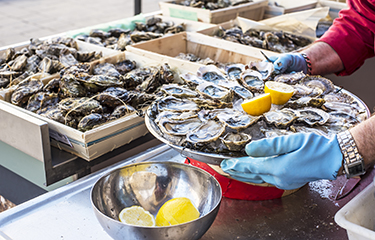Traceability and labeling are always salient to the seafood industry, and SeafoodSource’s top 5 most read food safety and health related stories of 2022 highlight that link.
While seafood product recalls occurred at a similar rate as in past years, in 2022, SeafoodSource readers were typically more interested in big-picture stories on proposed rules and traceability.
Number 5: New U.S. “healthy” label should boost seafood consumption
The U.S. Food and Drug Administration proposed new criteria for “healthy” labeling on food packaging, which industry insiders predicted could boost seafood consumption.
The FDA’s proposed rule would align the definition of the “healthy” claim with current nutrition science, the updated Nutrition Facts label and the current Dietary Guidelines for Americans. The move is to push Americans toward healthier foods.
Experts in the seafood industry praised the proposed rule, saying it could reinforce the federal recommendations that Americans eat two to three servings of seafood each week.
Number 4: New FDA rule ups U.S. seafood suppliers’ traceability requirements
The U.S. Food and Drug Administration is stepping up traceability requirements for suppliers of seafood and other fresh foods.
“FDA will be able to more rapidly and effectively identify the origin and route of travel of certain contaminated foods to prevent or mitigate foodborne illness outbreaks, address credible threats of serious adverse health consequences or death, and minimize overly broad advisories or recalls that implicate unaffected food products,” the agency said in a press release in November.
The additional recordkeeping requirements apply to those that manufacture, process, pack, or hold certain foods, including all histamine-producing species of finfish, all finfish potentially contaminated with ciguatoxin (such as grouper, barracuda, and snapper), and all finfish. The rule also applies to all smoked fish, molluscs, and crustaceans.
The rules were criticized by some organizations, saying it would demand huge investments and went beyond the FDA’s statutory authority.
Number 3: Seafood fraud a growing international problem impacting food safety, study finds
A report released in April examined food fraud across 80 countries and 72 seafood species, finding seafood fraud is a growing problem internationally.
“The 11 sins of seafood: Assessing a decade of food fraud reports in the global supply chain” examined seafood fraud incidents over the past 10 years, as reported via the E.U.’s Rapid Alert System for Food and Feed, Decernis's Food Fraud Database, HorizonScan, and LexisNexis databases, in order to analyze the types of fraud that commonly occur.
More than half (53 percent) of the issues reported across all four datasets involved the presence of illegal or unauthorized veterinary residues in seafood originating from Asia, particularly Vietnam, China, and India, where antibiotics are employed for both prophylactic and therapeutic use.
Species substitution was also a major issue, including monkfish substituted for pufferfish in Senegal and the Gambia, and 10 metric tons of fake jellyfish made from sodium alginate, calcium chloride, and aluminum sulphate produced and distributed in China in 2015.
Number 2: Raw salmon used in sushi and poke linked to U.S. salmonella outbreak
A multistate outbreak of salmonella infections in the U.S. was linked to raw salmon supplied to sushi and poke restaurants.
Thirty-three illnesses and 13 hospitalizations are linked to the outbreak, traced back to Pico Rivera, California, U.S.A.-based supplier Mariscos Bahia, the U.S. Food and Drug Administration said in a press release in October.
Of 16 people interviewed by authorities, 12 reported eating sushi, sashimi, or poke at restaurants in California and Arizona. Of those interviewed, 11 people remembered details about the type of fish consumed and nine report eating raw salmon before getting sick.
No deaths were reported as a result of the outbreak.
Number 1: NOAA raids North Carolina seafood market
In January NOAA officers raided B&J Seafood Market in New Bern, North Carolina, U.S.A.
The raid involved NOAA Fisheries trucks which blocked off entrances to the parking lot while officers carried several full trash bags and boxes labeled "fresh seafood" to their vehicles, the New Bern Sun Journal reported.
The contents of the containers, or the reasons for the raid, were not disclosed by NOAA.
The market has since reopened, according to its Facebook page.
Photo courtesy of Alvaro German Vilela/Shutterstock







